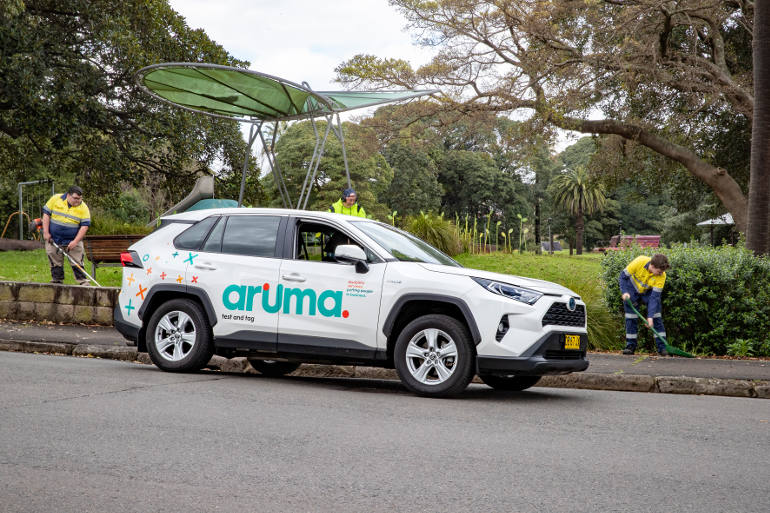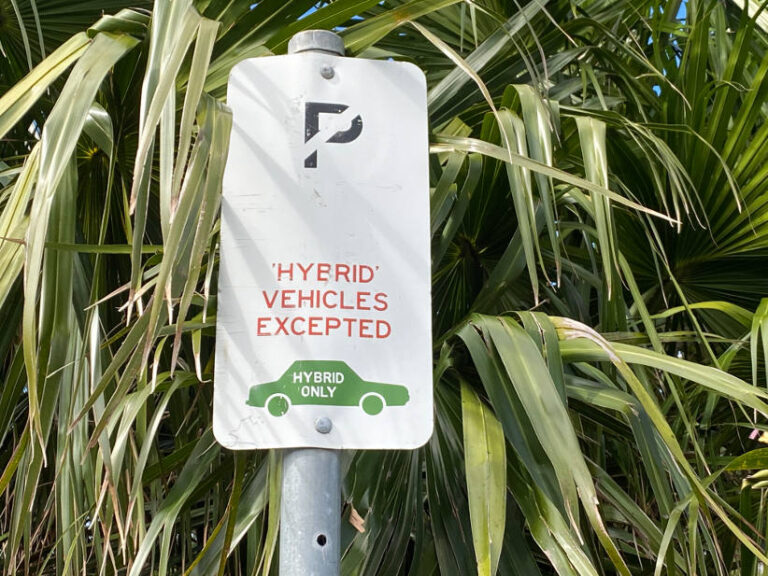Aruma has cut its whole of life fleet costs, while reducing its carbon footprint, by switching a large proportion of its fleet to hybrid vehicles.
Since introducing the first hybrid vehicles in February 2019, the not for profit organisation has been able to realise potential whole of life savings of up to 13.1 per cent compared to similar petrol vehicles.
Based on the current fleet size of approximately 750 vehicles, nearly 20 per cent of which are now hybrid, Aruma estimates it has achieved whole fleet cost savings of over $280,000 over the course of a three-year operating lease.
Aruma is a disability service provider. The organisation provides accommodation, employment opportunities and other support services for people with a disability, servicing over 5,000 customers across about 560 properties in New South Wales, ACT, Queensland, and Victoria.
The organisation’s fleet is an important part of its operations, not only providing much-needed mobility for its clients but also transport for operational staff who travel to support clients across the eastern seaboard.
Aruma’s Commercial Manager, Nikki White, said optimising its financial performance and reducing costs was the major factor in choosing to introduce Toyota hybrid vehicles for its fleet.
“The not for profit sector is extremely challenging with increasing costs and reductions in our customers’ NDIS (National Disability Insurance Scheme) funding. Reducing operating costs enables Aruma to redirect funds to serving our customers and supporting our staff,” Ms White said.

Fuel savings cover the increase in purchase price
Despite the slightly higher asset cost of a hybrid vehicle, since the introduction of hybrid vehicles to the Aruma fleet, that started in 2019 and now numbers 138, it has seen a reduction in overall fuel costs.
Toyota vehicles make up approximately 75 per cent of the total fleet with the remainder largely being Hyundai iMax and Kia Carnival.
Of the Toyota vehicles, Aruma has progressively been switching its petrol Corollas, Camrys and 2WD RAV4s to hybrid variants that has enabled a potential reduction in average fuel consumption of 30 per cent, resulting in an average 68 per cent increase in range from every tank.
By being able to drive further, on less fuel, Aruma estimates this can reduce its fuel cost per transaction by 6 per cent compared with the equivalent petrol versions.
Based on the current hybrid fleet in 2022, Aruma estimates the potential whole of life cost savings for its Toyota hybrid vehicles as:
- 7% for its fleet of Toyota Corolla Ascent Sport
- 13% for its fleet of Toyota Camry Ascents
- 9% for its fleet of Toyota RAV4 GX 2WD
More than 30% reduction in emissions
While the prime motivation for the introduction of hybrid vehicles to its fleet was cost reductions, Aruma has also been able to move toward its long-term goal of operating as a more sustainable business.
Ms White said that as one of the largest disability service providers in Australia, operating a large fleet, Aruma has a role to play in contributing to a more sustainable environment.
“We recognise that whilst supporting our customers, we can also support the environment and that’s quite important to us, to make sure that our customers and our staff are doing whatever we can towards reducing our impact on society” Ms White said.
By switching nearly 20 per cent of its fleet to hybrid, Aruma estimates it has been able to reduce its fleet CO2 emissions by up to 32 per cent between February 2019, and February 2022, with the prediction for this figure to increase to 37 per cent by the completion of the current lease period assuming no change in fleet size.
The inclusion of hybrids in the fleet means that up to 94 per cent of CO2 emisions from the Aruma fleet come from the non-hybrid vehicles, demonstrating the impact that hybrids can have in reducing an organisation’s vehicle emissions.
Challenges
The transition to hybrid vehicles was not without challenges for Aruma with initial concerns raised by senior management over the higher asset and lease costs for a hybrid compared with a non- hybrid vehicle.
However, Ms White said that with support from Toyota Fleet Management, the team has been able to demonstrate that the higher asset and rental costs of hybrid vehicles is offset by the lower running costs over the life of the lease.
“I think the challenge for us is that some people just look at the upfront cost. It is sometimes hard to articulate the total cost of ownership, but we have been able to overcome this by using data to support our drive to pursue a greater hybrid mix in our fleet,” Ms White said.
She said the move to hybrid was well accepted by the drivers, with the only other challenge being in regards to specialist vehicles or specific requirements.
“In the context of hybrid vehicles, the other challenge that we have is where we need a vehicle for towing. We also support children’s services who often need bike racks, so we’ll often make exceptions, but by and large, we’ll be pushing for more hybrid models. Also we are yet to see hybrid versions of the larger vehicles used for transporting customers with mobility aids such as wheelchairs. So far the feedback has been really positive from senior leaders and they are fully supportive of our transition to hybrid,” she said.
When deciding to introduce hybrid vehicles to its fleet, Aruma explored a number of brands but with a long-standing collaboration with Toyota Fleet Management, it chose to stick with Toyota vehicles.
“We looked at other hybrid models outside of Toyota, but from a lease perspective the Toyotas were a more viable option from a cost perspective for Aruma.” Ms White said.
In addition to running cost savings, Aruma found that Toyota vehicles also had a higher re-sale value compared to other brands, giving them a competitive total cost of ownership.
Ms White said the transition to hybrid was very much a collaborative process with Toyota Fleet Management while the Toyota vehicles also had further benefits beyond reduced costs.
“Toyota offers a broad range of hybrid vehicles that are fit for the intended purpose. As a brand, they are safe and reliable, which is of utmost importance to Aruma,” she said.
With the support of Toyota Fleet Management, by switching to a greater mix of hybrid vehicles in its fleet, Aruma has been able to substantially reduce its fleet costs, contributing to its core business objectives and using what limited funds it has, to better improve its services for the thousands of customers with a disability. At the same time, it has reduced its fleet emissions and is able to provide safe, reliable transport for those that need it and is continually looking to further increase the proportion of its hybrid fleet for the foreseeable future.






